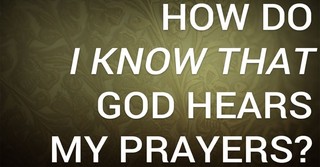Bible Concordance: How to Study Scripture One Word at a Time
Share

Have you ever come across a single word in the Bible that seemed to carry more weight than you could grasp at first glance? That’s where a Bible concordance becomes an indispensable tool for serious Bible study. Whether you're looking to trace the use of a word like “grace” from Genesis to Revelation or uncover the original Hebrew or Greek root behind a key term, a concordance lets you dig deeper, connecting verses, themes, and meanings across Scripture. In this guide, you’ll learn what a Bible concordance is, the types available, and exactly how to use one to unlock the richness of God’s Word, one word at a time.
What Is a Bible Concordance?
A Bible concordance is a study tool that alphabetically lists every word found in the Bible, along with every verse where that word appears. It helps readers study Scripture in depth by connecting verses through key terms and their original meanings. This allows for a richer, more nuanced Bible study experience.
For example, if you’re meditating on the word “grace,” a concordance will show every place that word is used, from Genesis to Revelation, revealing themes, connections, and spiritual depth.
How to Use a Bible Concordance Tutorial
Looking to explore God's Word more deeply? Click here to access Bible Concordances on Bible Study Tools.
Step-by-Step Guide to Using a Bible Concordance

1. Choose a word that stands out in your Bible reading.
2. Find the word alphabetically in the concordance.
3. Review all the verses where that word appears.
4. Read the surrounding passages to understand the context.
5. If using Strong’s Concordance, note the number and look up the Hebrew or Greek root.
6. Compare how different translations render the word.
7. Record patterns, themes, and insights.
8. Pray through what you’ve learned to apply it to your life.
Types of Bible Concordances
1. Mini-Concordance
These are often found in the back of study Bibles and are good for quick reference. However, they don’t provide every instance or in-depth study capability.
2. Exhaustive Concordance
This type includes every word found in the Bible, even the minor ones. It’s ideal for comprehensive Bible study.
3. Strong’s Exhaustive Concordance
Created by Dr. James Strong in 1890, this tool assigns a unique number to every Hebrew and Greek root word. It allows you to explore original meanings even without knowledge of biblical languages. While originally developed for the King James Version, many versions of Strong’s now work with translations like the ESV, NASB, and NIV.
Digital Tools for Bible Concordance Study
Online platforms like BibleStudyTools.com make it easy to search for words, access Strong’s definitions, and cross-reference verses. These tools replicate and even enhance the function of a physical concordance.
Bible Concordance vs. Reference Bible
While a reference Bible points to related verses, a concordance acts like a search engine. A reference Bible offers selected connections; a concordance shows you every occurrence of a word throughout Scripture.
Bible Concordances Across Translations
Some concordances are adapted for modern translations, allowing you to compare how different Bible versions interpret the same word. For instance, studying how “love” appears in the KJV versus the NASB can reveal additional layers of meaning and nuance.
Common Questions
Do all Bibles include a concordance?
No. They’re typically included in study Bibles or sold as separate resources.
Which Bible works best with Strong’s Concordance?
Strong’s was originally made for the King James Version, but now supports versions like the ESV, NASB, and NIV.
What does a Strong’s number mean?
Each number corresponds to a Hebrew or Greek root word. For example, Strong’s #333 means "to observe carefully" in Hebrew—revealing insight not obvious in English.
Are there Catholic Bible concordances?
Yes. These are based on translations like the Douay-Rheims or NAB and include books specific to Catholic Bibles.
Let Scripture Speak for Itself
A Bible concordance won’t entertain or spoon-feed you answers. But it will train you to study Scripture with diligence and integrity. It is one of the most enduring and powerful tools available to serious Bible students.
So next time you read your Bible and pause on a word, don’t skip over it. Reach for your concordance—and let the Word of God explain itself.







